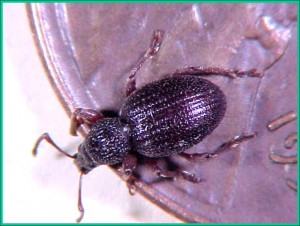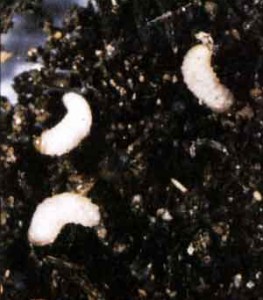
Strawberry root weevil
Strawberry root weevil (Otiorhynchus ovatus)
The strawberry root weevils are harmless beetles that become a household nuisance when they invade homes during the summer months, sometimes in enormous numbers. The weevil is about ¼ of an inch long and dark brown in color. The abdomen is quite rounded and in when viewed in profile, the weevil’s short snout can be easily seen. The larvae feed on small roots of wild and cultivated strawberries, brambles and some ornamental plants. Adult weevils are wingless and enter dwellings through loose fitting doors, windows, screens, and other small cracks and openings. They crawl everywhere through the home: bathrooms, cupboards, floors, walls and ceilings. The good news is that they don’t do anything else. They don’t bite or sting, eat your house or stored food, or infest your pets, or transmit diseases. The best, long-term way to control these pests is to caulk and seal the outside of the house to prevent them from entering. The best method of controlling the weevils inside the home is to vacuum them up. If they become terribly numerous and a more aggressive method of control is desired, a persistent insecticide such as permethrin (sold under a variety of brand names, cyfluthrin (sold as Bayer Advanced Garden Insect Control for homeowners or Tempo for commercial applicators) or one of the Ortho products can be applied to the ground around the outside of the home to provide a 10 ft. treated barrier to help prevent their entry.
Be sure to read and follow all instructions and safety precautions found on the label before using any pesticide.





 Print
Print Email
Email
